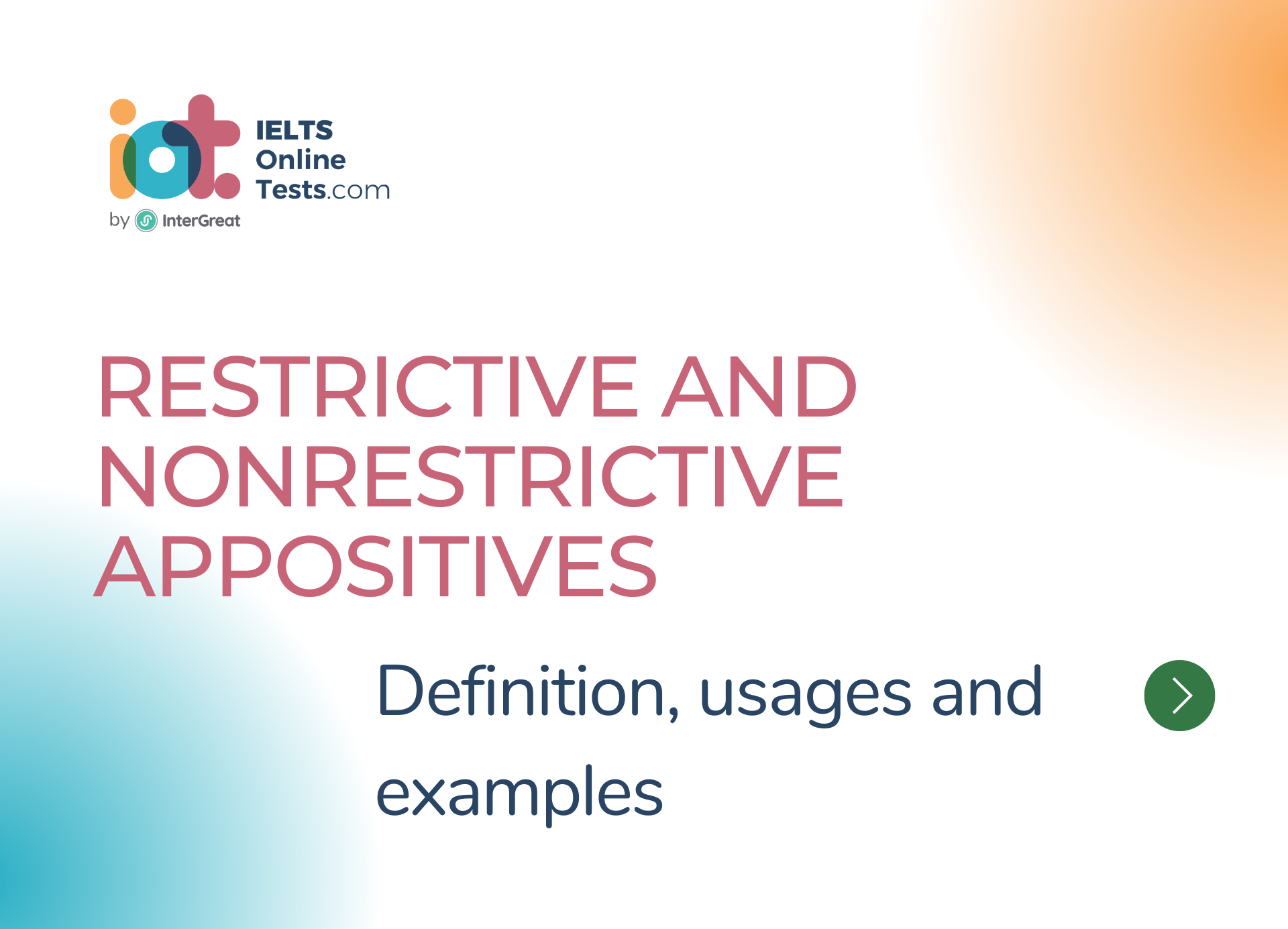
Restrictive and Nonrestrictive Appositives
Restrictive and nonrestrictive appositives are two types of appositives that provide additional information about a noun or pronoun. They differ in terms of their essentiality and the way they are punctuated.
Here's more information about each:
Restrictive Appositives:
- Restrictive appositives are essential to the meaning of the sentence. They limit or restrict the meaning of the noun or pronoun they modify.
- They provide necessary information that is crucial for identifying or specifying the noun or pronoun.
- Restrictive appositives are not set off by commas.
- Examples:
- "My friend John enjoys playing the guitar." (The appositive "John" is restrictive as it specifies which friend is being referred to.)
- "The novel 'To Kill a Mockingbird' is a classic." (The appositive "'To Kill a Mockingbird'" is restrictive as it identifies which novel is being discussed.)
Nonrestrictive Appositives:
- Nonrestrictive appositives provide additional, nonessential information about the noun or pronoun. They add descriptive detail but do not change the core meaning of the sentence.
- They are not necessary for identifying or specifying the noun or pronoun.
- Nonrestrictive appositives are set off by commas, parentheses, or dashes.
- Examples:
- "My brother, an avid reader, loves spending time in the library." (The appositive "an avid reader" is nonrestrictive, adding extra detail about the brother but not essential to identifying him.)
- "Paris, the capital of France, is a popular tourist destination." (The appositive "the capital of France" is nonrestrictive, providing additional information about Paris but not changing its core identity.)
It is important to distinguish between restrictive and nonrestrictive appositives to ensure clarity and precision in your writing. Restrictive appositives are essential for specifying the noun or pronoun, while nonrestrictive appositives provide additional, nonessential information. Proper punctuation is crucial in setting off nonrestrictive appositives to clearly indicate that they are separate from the rest of the sentence.




